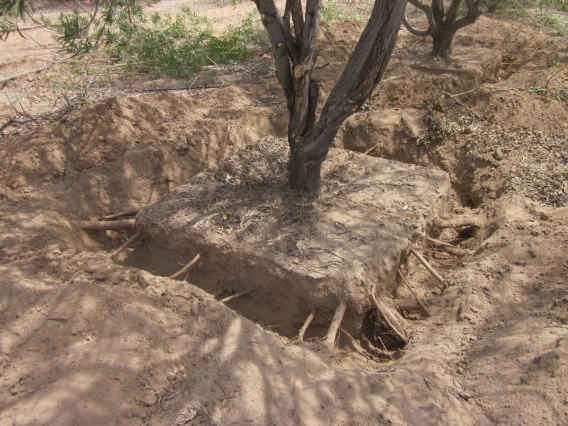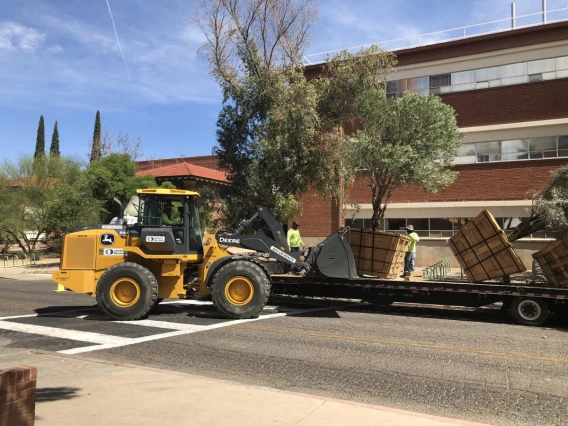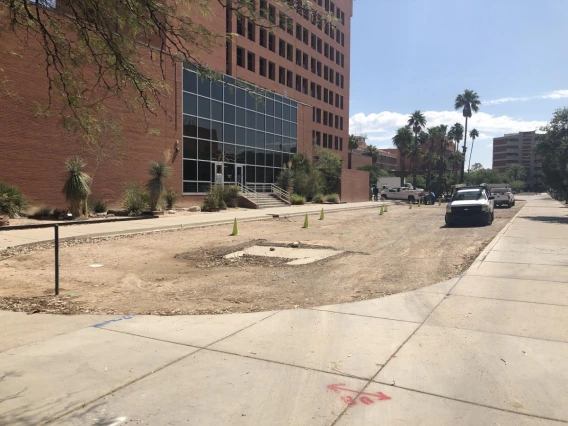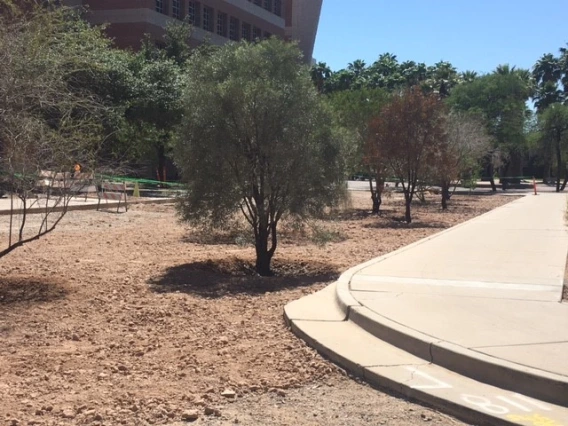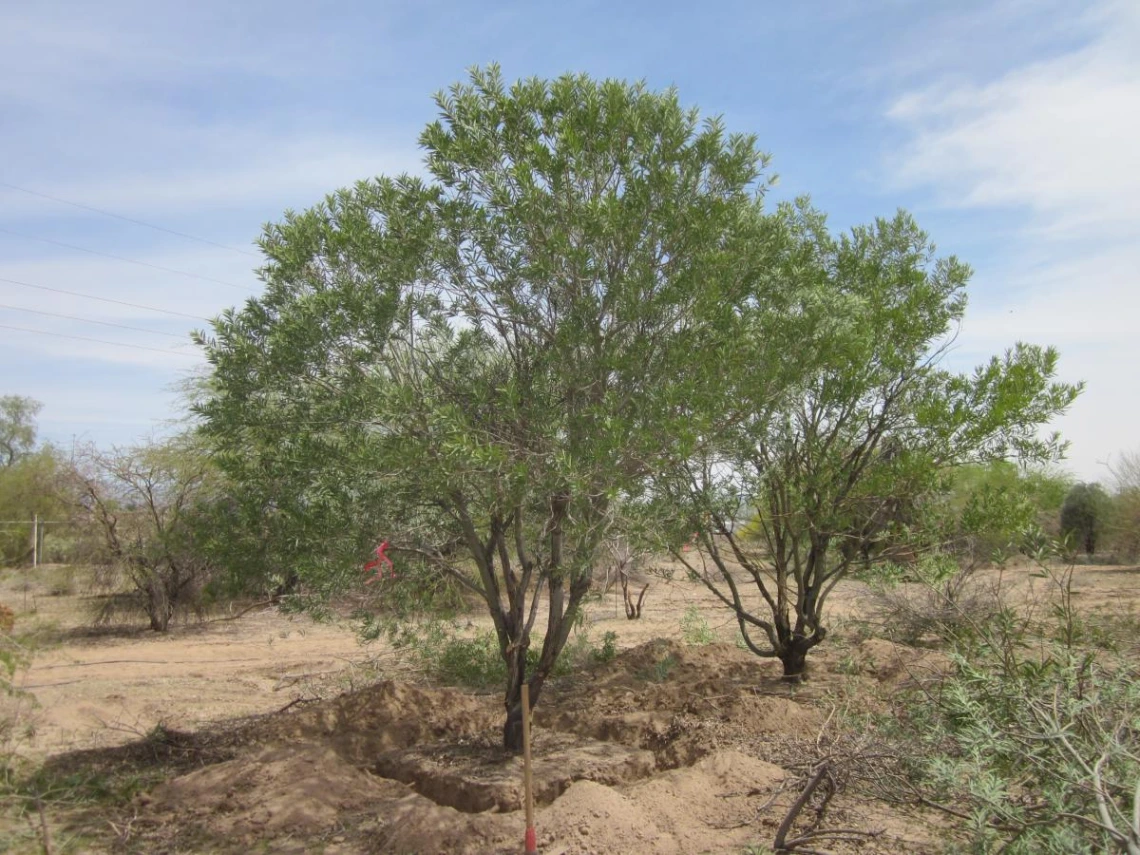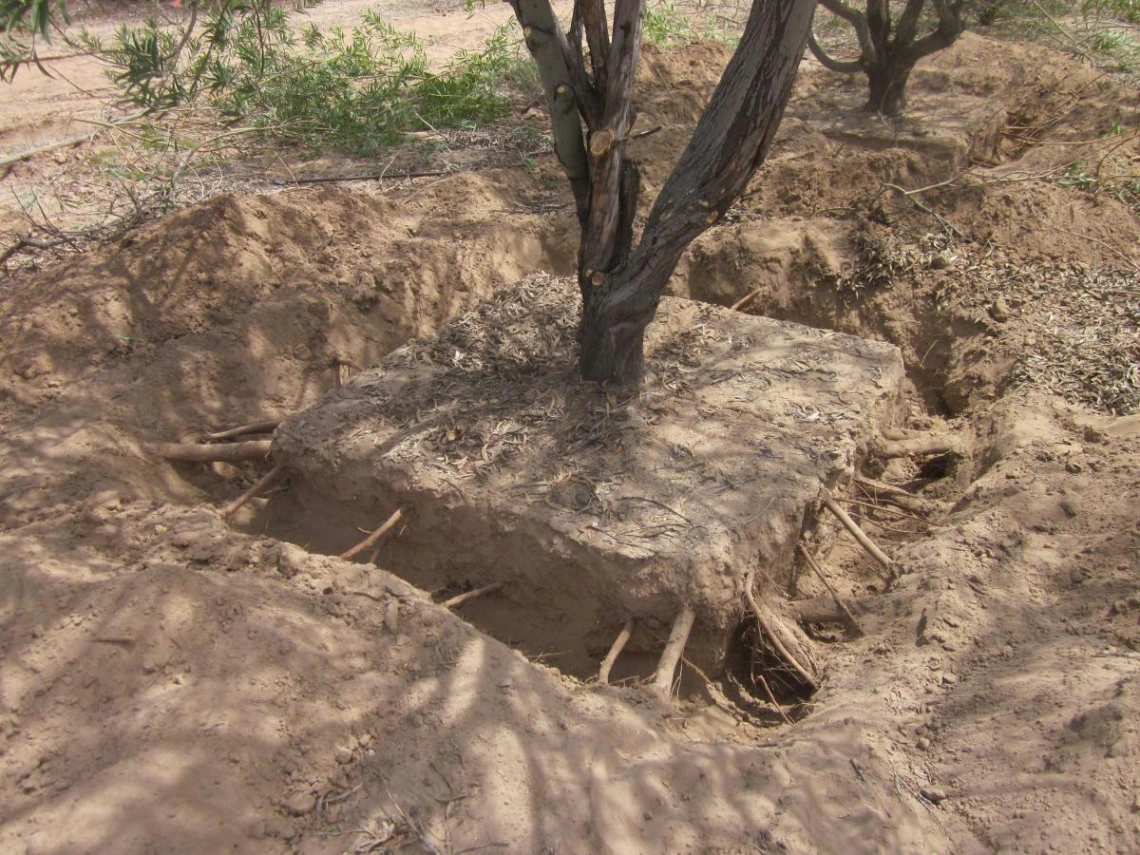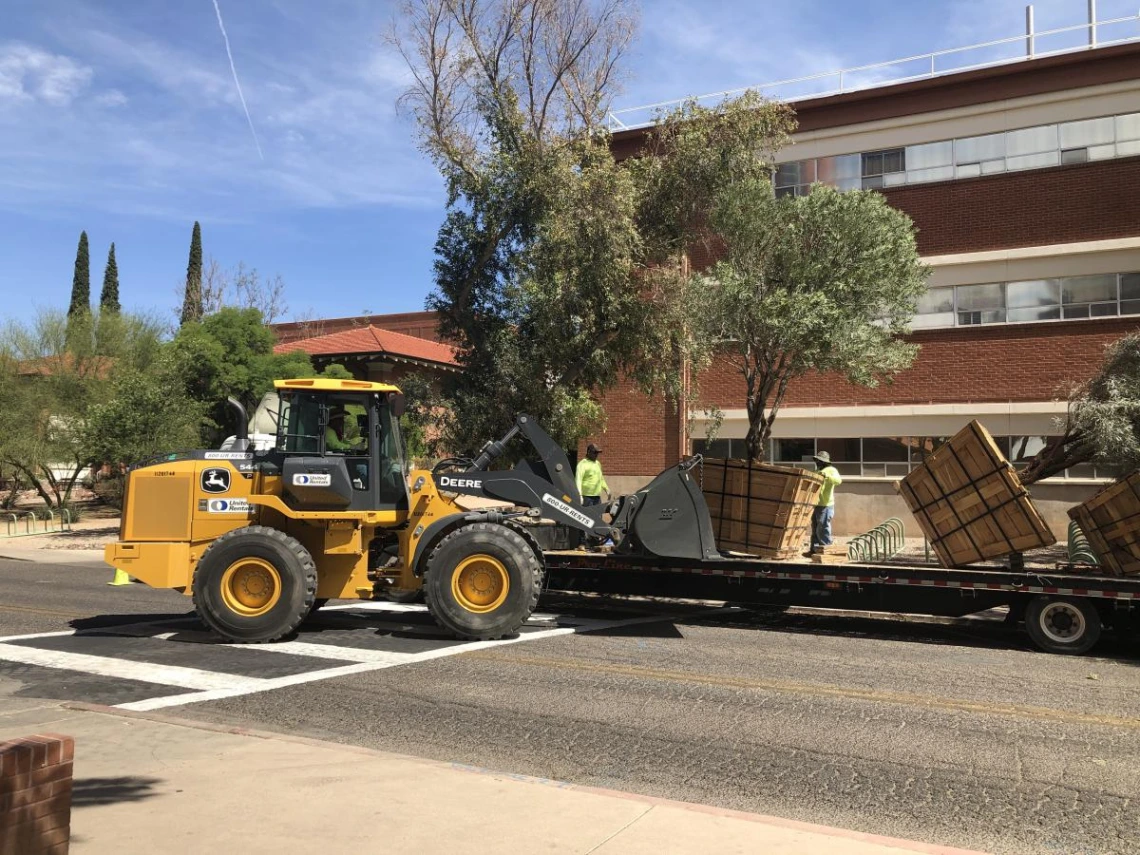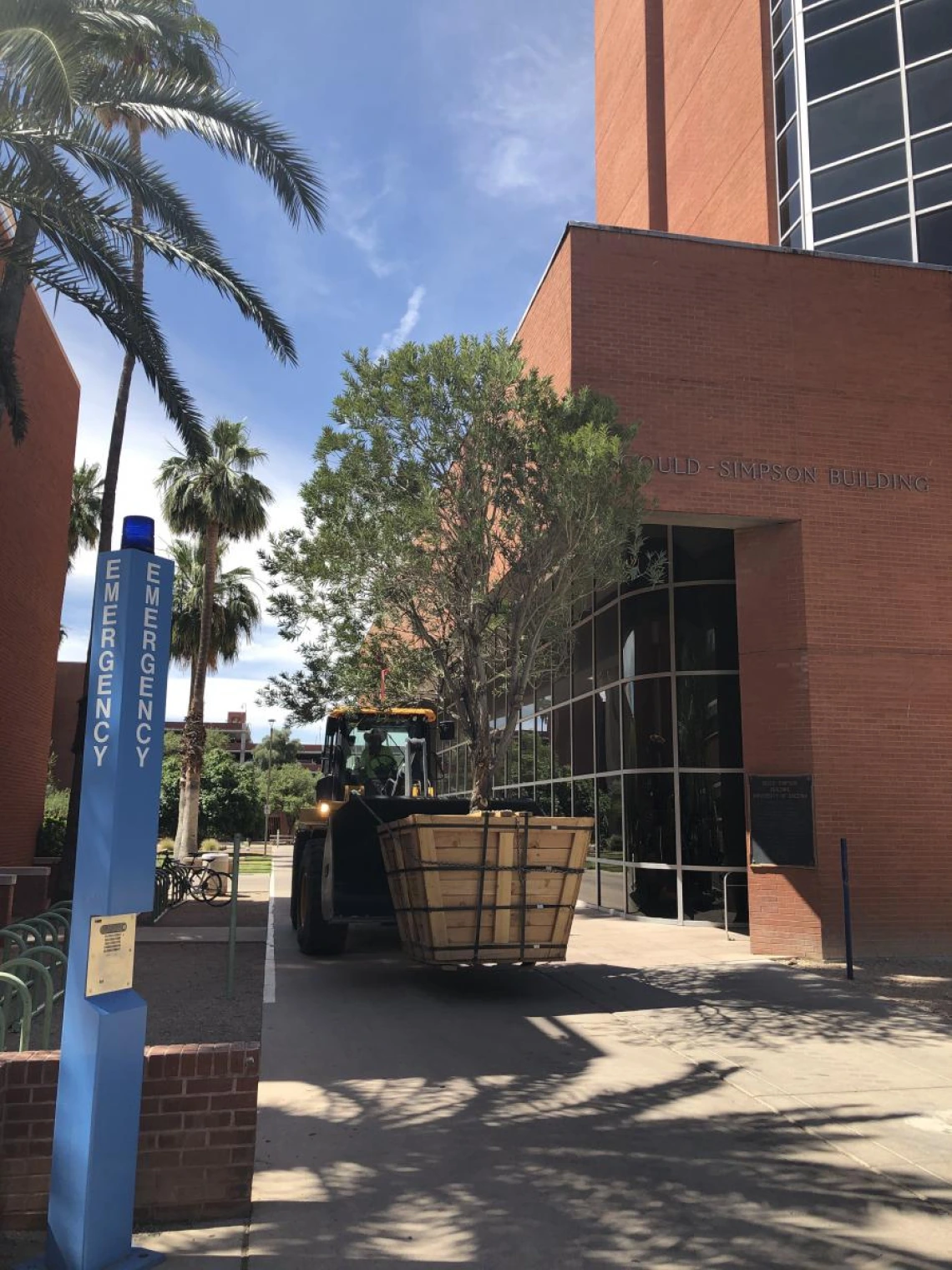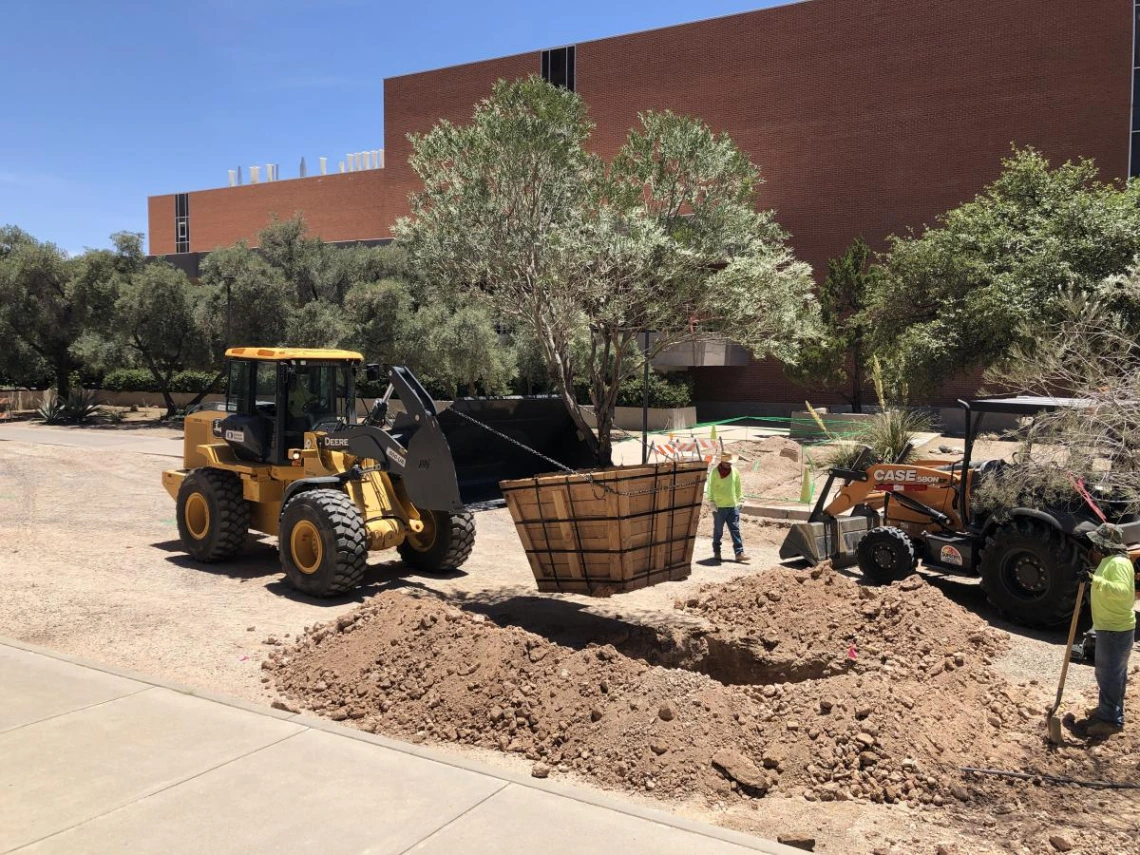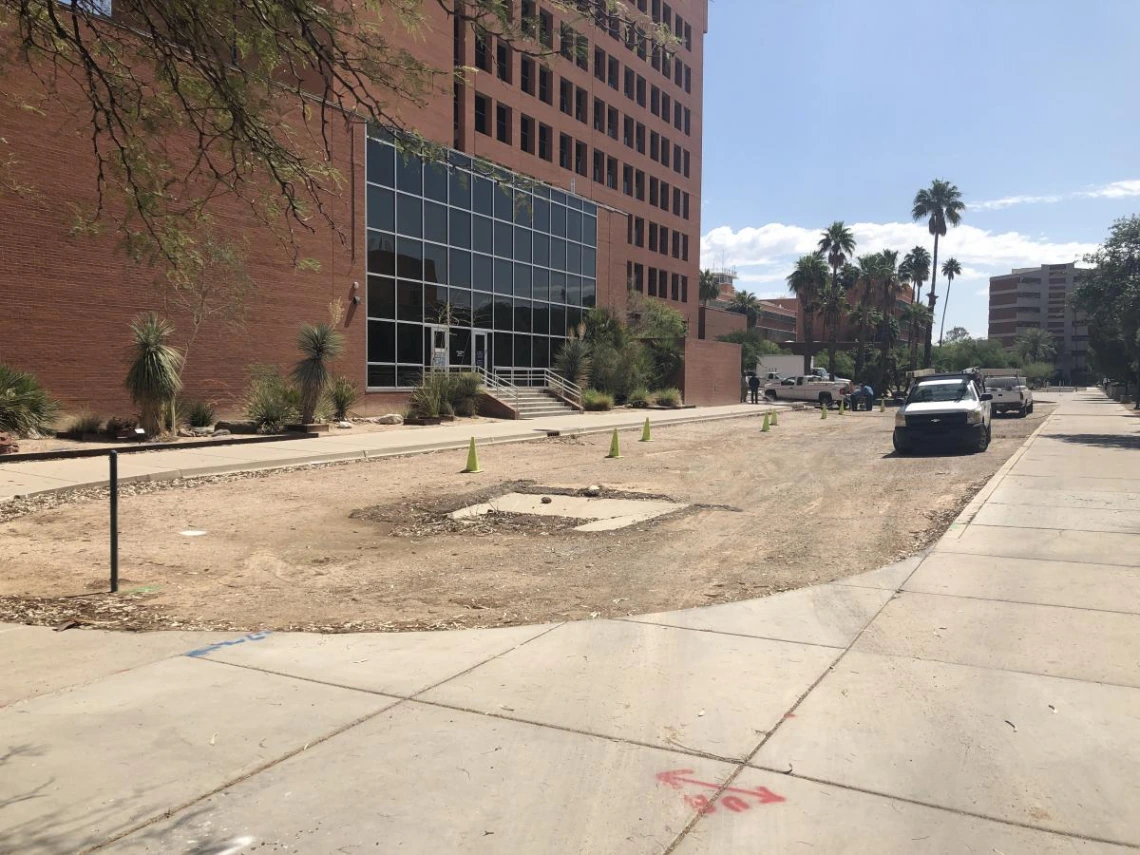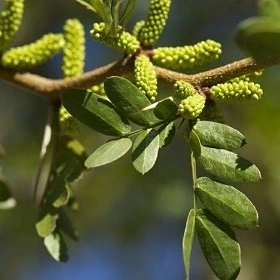
The Desert Legume Program (DELEP), established as a joint project of the University of Arizona and the Boyce Thompson Arboretum, preserves and promotes biodiversity by evaluating field performance of woody species, and maintaining seed germplasm for more than 1400 species of legumes. Legumes are the second most important group of food plants, for people and animals, and provide forestry, medicinal and ornamental species. While the USDA-ARS National Plant Germplasm System (NPGS) maintains a back-up collection of DELEP’s seeds at their seed storage facility in Fort Collins, Colorado, there is additional value in the living specimens growing in the DELEP test field plots. Here at the field site, over 600 species have been evaluated for adaptability to local climate conditions and horticultural and botanical characteristics. As the sale of the land at one of these field sites risked the loss of many mature specimens, the Campus Arboretum was able to orchestrate the salvage of a number of the most educationally and scientifically valuable specimens. The process was not without drama! While the West Campus Agriculture Center was being sold, irrigation oversight was limited. By the time the problem was identified in early spring 2021, the trees were quite drought stressed. Many thanks to Juan Barba and Associates, who oversaw the Campus Arboretum tree salvage process. Juan lent his expertise as an arborist, as well as his professionalism and good humor, to ensure the trees received twice weekly flood irrigation (thanks to Andy's Mobile Fuel and Water Services), and that Native Resouces had access and clear information about the trees they would salvage for us. Thanks as well to Matt Johnson, DELEP botanist, who identified and tagged the trees, wrote detailed descriptions of the accessions, and, who over the 10 week salvage operation, provided access to the site for water deliveries, arborist, and tree salvage crews.

For more information about the DELEP program, please see https://cals.arizona.edu/desertlegumeprogram/ All nine trees are now housed as a group south of the Gould Simpson Building where legume relatives from Australia, Africa, and the desert Southwest are featured as a collection. Upon completion of the tree salvage, the site improvement is already astonishing! However, given its prominent location in the science concourse, we are eager to develop it further as a complete model of a desert-approprial urban landscape. With support from donors, we envision additional landscaping in the understory, a bike path that connects to the existing path to the east and west of the site, and botanical signage that connects to Campus Arboretum species description pages to interpret the garden accessions.
The rescued plants include the following:
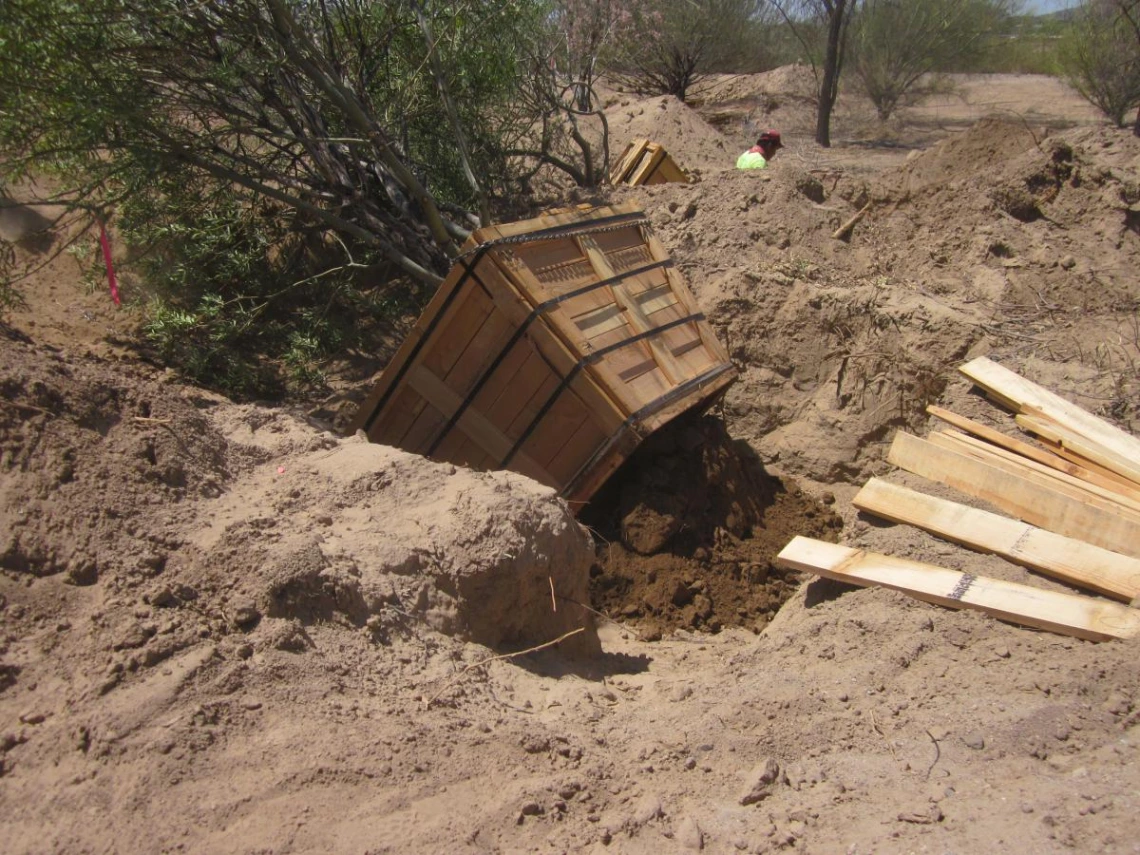
A. cambagei at the DELEP fields (West Campus Ag Center) tipped on its side awaiting the bottom board to be applied during boxing.
Acacia cambagei – gidgee, stinking wattle
Evergreen trees growing to 15—30 feet high with a rounded or irregular canopy. The stems are unarmed. Phyllodes (leaves), silvery gray, lance-shaped, 1.5—5.5 inches long. Flowers yellow, in spherical heads; flowering autumn—spring. Widespread in central and eastern Australia. The hard wood of this tree is used in turnery. The common name “stinking wattle” is derived from the odor that the tree gives off. These trees were grown from seeds collected from wild-growing trees 10 km west of Tibooburra, New South Wales, Australia, in January 1997 by Peter Milthorpe. [Delep Accession #97-0040 (2)]
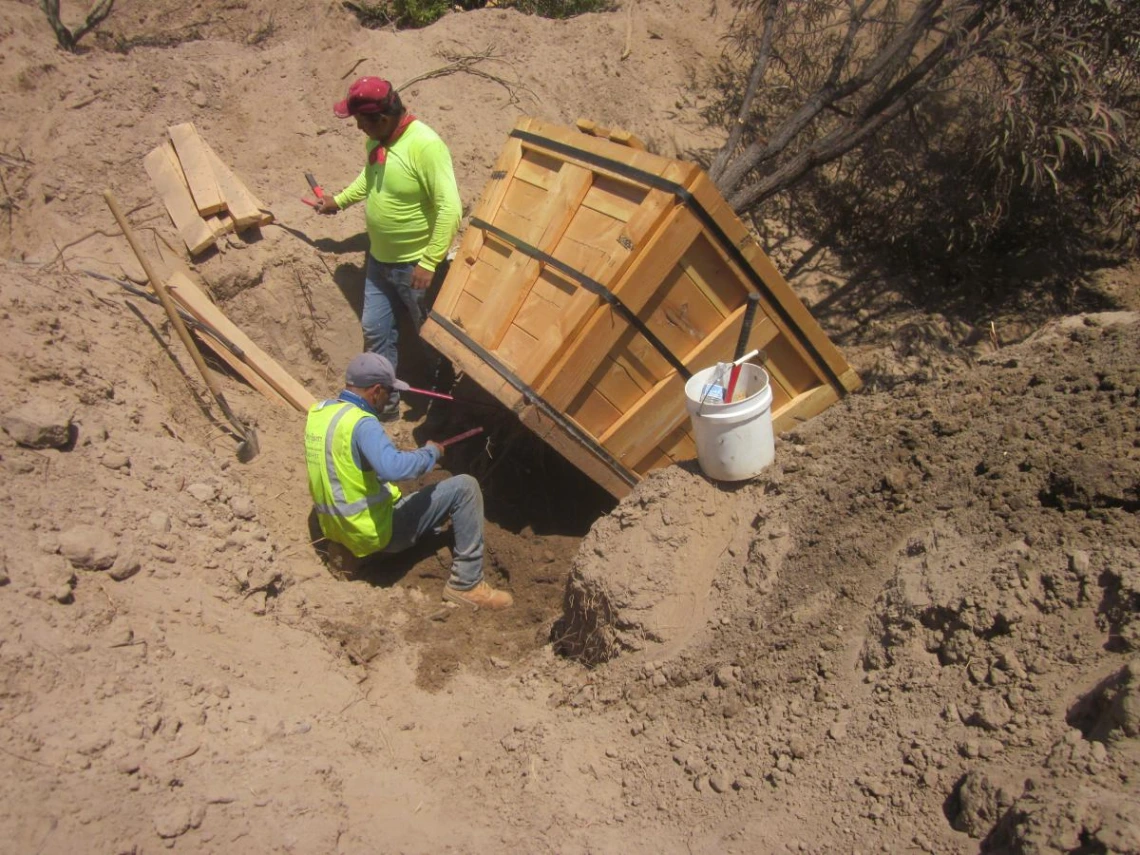
A. harpophylla tipped on its side three weeks after sides were boxed. This plant required that a 3" diameter tap root be cut in order to complete the boxing process. This is a major stress for the tree that may impact its survival. We hope the diligence with supplemental water and care administered by the salvage company, will mitigate the effects of the later stress during boxing.
Acacia harpophylla – brigalow
Evergreen trees growing to 40+ feet high with a rounded canopy. The stems are unarmed. Phyllodes (leaves), grayish green, lance-shaped, 3.5—8 inches long. Flowers yellow, in spherical heads; flowering in spring. Widely distributed in eastern Australia. The bark of brigalow has been harvested for tannins. The trees often have a straight trunk and serve as a source of timber. This tree was grown from seeds purchased from Nindethana Seed Service, Australia, without specific locality data. [Delep Accession #91-0346 (1)]
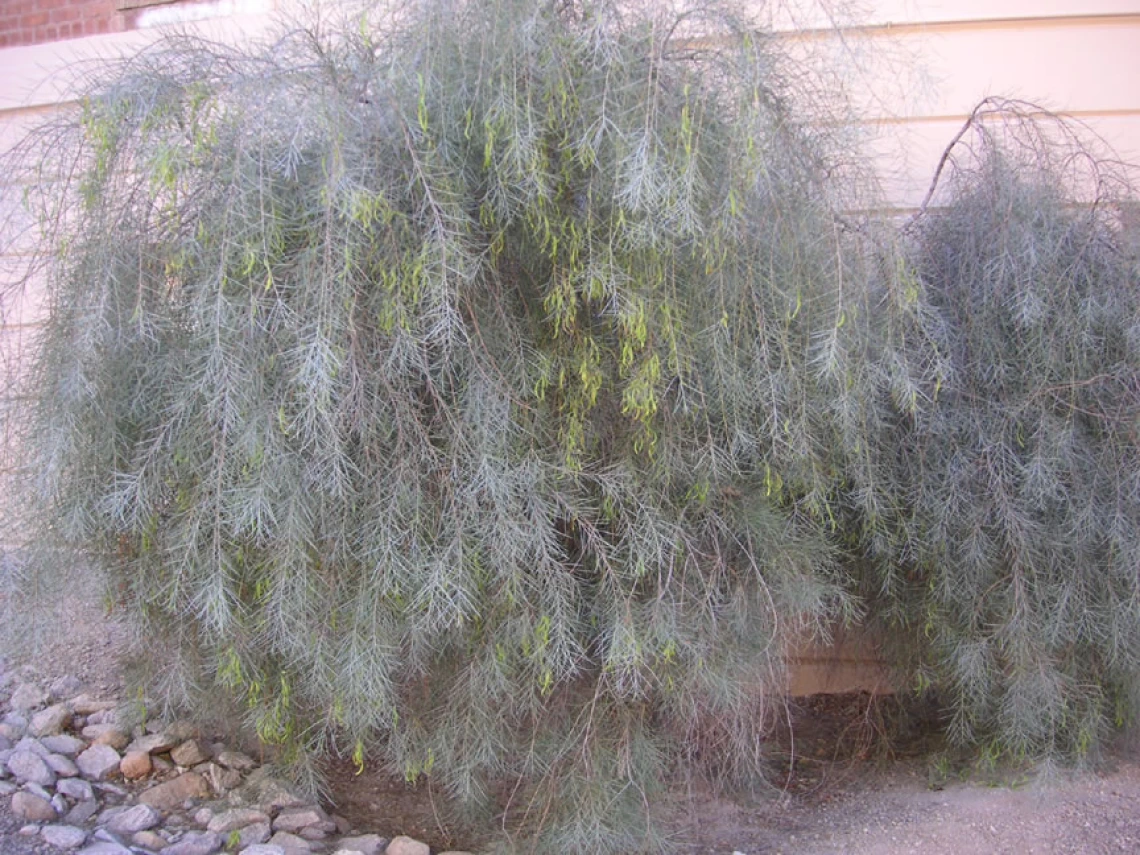
A specimen of this species (A. papyrocarpa) grown from DELEP seed and planted around 2010 near Yavapai Hall, UArizona Campus.
Acacia papyrocarpa – western myall
Evergreen trees growing to 25 feet high with a spreading, dome-shaped canopy. The stems are unarmed. Phyllodes (leaves), dull green, narrow, 1.5—4.5 inches long. Flowers golden-yellow, in spherical heads; flowering mainly in later winter and spring. Native to southern Australia. Wood of this species has been used by indigenous Australian people to make musical instruments. These trees were grown from seeds purchased from Nindethana Seed Service, Australia, without specific locality data. [Delep Accession #90-0121 (2)]
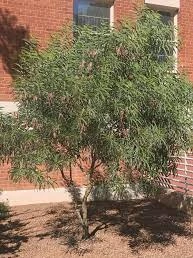
A specimen of this species (V. pruinocarpa) grown from DELEP seed and planted by undergraduate students in 2013.
Acacia pruinocarpa – western gidgee, black gidgee
Evergreen trees growing to 15 (35) feet high with a spreading canopy. The stems are unarmed. Phyllodes (leaves), blue-green, broadly linear, 3—6.5 inches long. Flowers yellow, in spherical heads; flowering in spring. Native to parts of central and western Australia. Indigenous Australian people are reported to mix leaf and stem ash of this species with chewing tobacco for use as a stimulant. The foliage is browsed by livestock. These trees were grown from seeds purchased from Nindethana Seed Service, Australia, without specific locality data. [Delep Accession #90-0126 (2)]
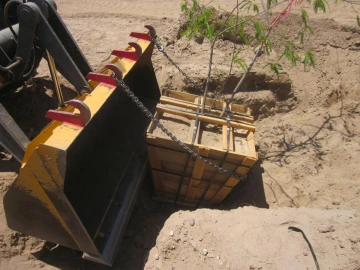
Although this specimen was "the baby" of the group, its small size may actually reduce the transplant shock. It responded best to irrigation during the early spring preparation, leafed out on time, despite boxing having been initiated, and was full of new growth at the time of the move to campus.
Anadenanthera colubrina
This plant was grown from seeds collected from a cultivated tree on the campus of the Universidad Nacional de Catamarca, Argentina, in October 1991 by Matthew Johnson and Roberto Neuman. [Delep Accession #91-0478 (1)]

B. carronii in the salvage process after sides are cut and metal bands applied to the box sides.
Bauhinia carronii – Queensland ebony
Evergreen or drought-deciduous trees to 30 feet high. The stems are unarmed. Leaves with two leaflets to 2 inches long. The leaflets of juvenile plants are much smaller than those of mature plants. Flowers red, small; flowering in spring. Native to northeastern Australia. Native people in Australia obtained nectar from the flowers. The wood is reportedly used in cabinetry. This tree was grown from seeds collected from a wild-growing tree retained in the landscaping at the McCosker property, ca. 15 miles NE of Emerald, Queensland, Australia, in April 1994 by Matthew Johnson and Nick McCosker. [Delep Accession #94-0033 (1)]

S. mellifera prior to boxing, with the root ball delineated to show where side boxing will later occur.
Senegalia melifera subsp. detinens – hook thorn; swaarthaak
Drought- and cold-deciduous shrubs or small, spreading, low-branched trees to 20 feet high. The stems are armed, with paired, recurved spines at the nodes. The bipinnate leaves are small, with 2 or 3 pairs of pinnae, each with 1 or 2 pairs of leaflets. Flowers are white, in spherical or slightly elongated heads; flowering spring. This subspecies has a wide distribution in southern and eastern Africa. The foliage, flowers, and fruits are nutritious and are browsed by livestock and wildlife. The heavy wood of this species is used for tool handles. This tree was grown from seeds collected from wild-growing plants 20 km southwest of Lobatse along road to Ngwaketse Agricultural Station, Botswana, in December 1990 by Anton Ellert and Mary Wilkins. [Delep Accession #91-0140 (1)]

V. kirkii being boxed
Vachellia kirkii – flood-plain acacia; vloedvlaktedoring
Evergreen or semi-deciduous trees to 25 feet high with a spreading canopy. Stems are armed with paired, white, straight spines at the nodes. Leaves are binpinnate and feathery with numerous leaflets. Flowers cream-colored, in spherical heads; flowering in spring. Rather widely distributed in eastern and southern Africa from Sudan to Namibia and Zimbabwe. Elephants are reported to feed heavily on this species. These trees were grown from seeds purchased from Silverhill Seeds, South Africa, without specific locality data. [Delep Accession #99-0014 (2)]
Next steps
- Address associated bike path - completed March 2023!
- Design and plant understory - completed May 2023!
- Create interpretive QR coded signs and associated webpages - completed July 2023!
- Create a self-guided tour - completed August 2023!
- Participate in the self-guided tour
Help us by donating in support of this project or other projects like this.



